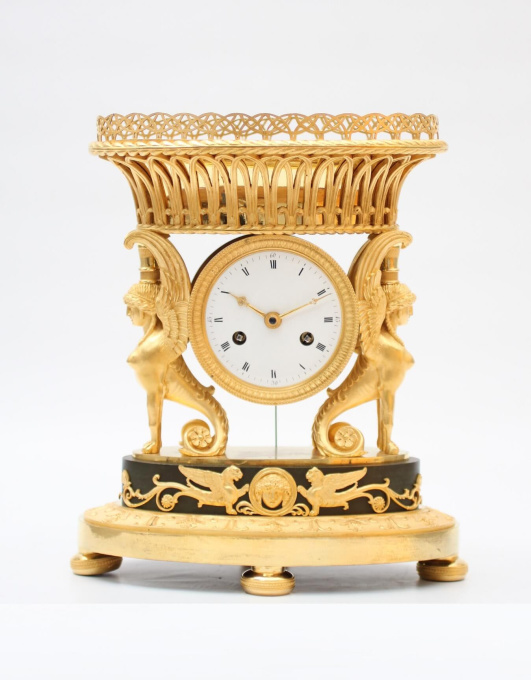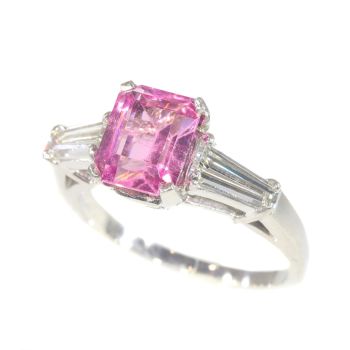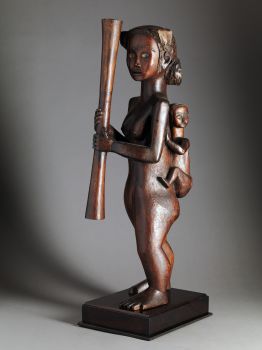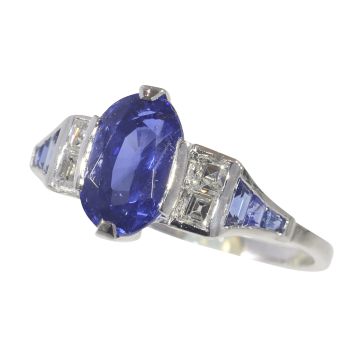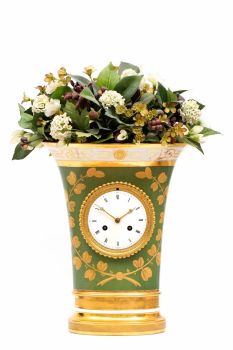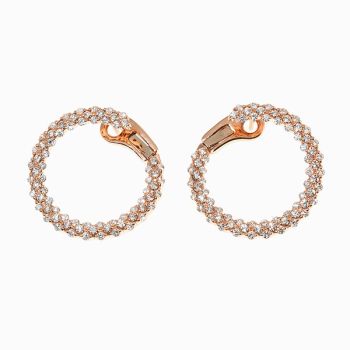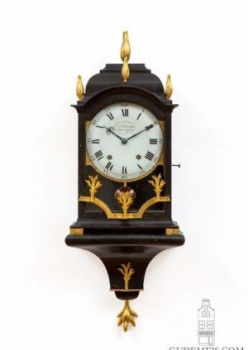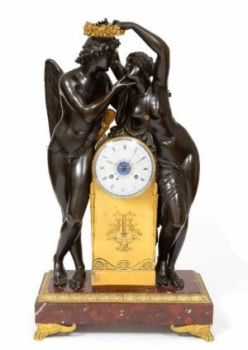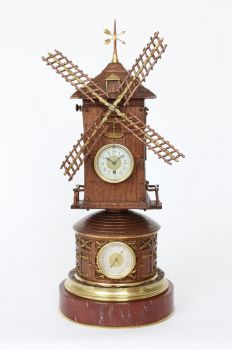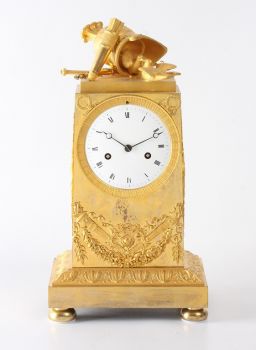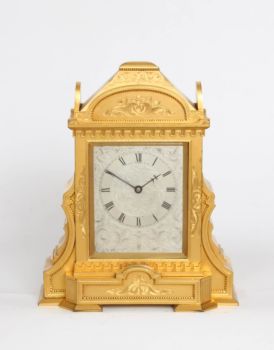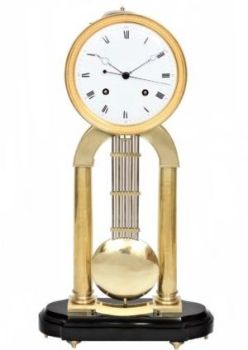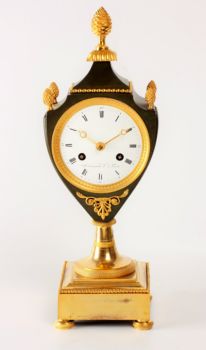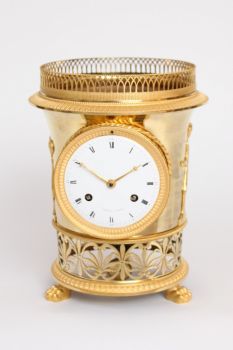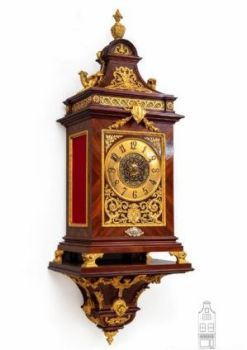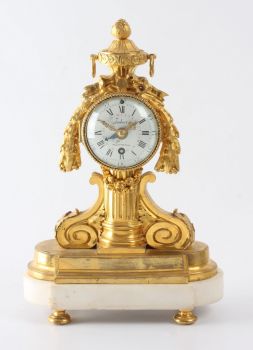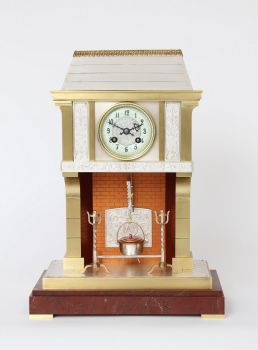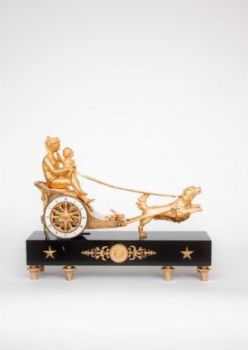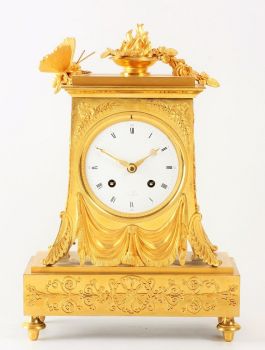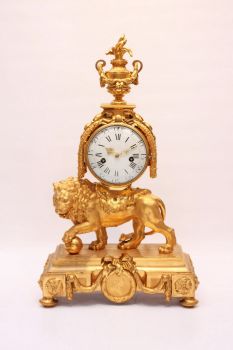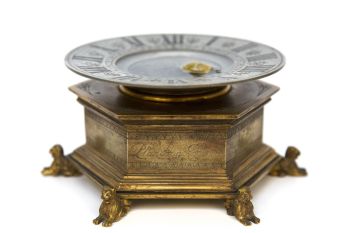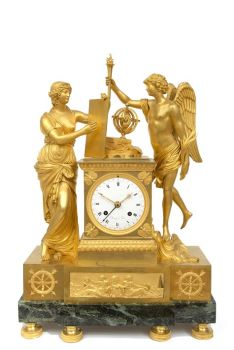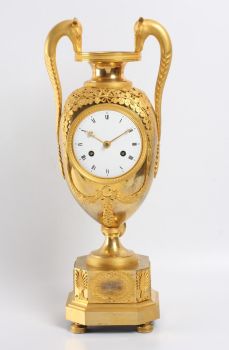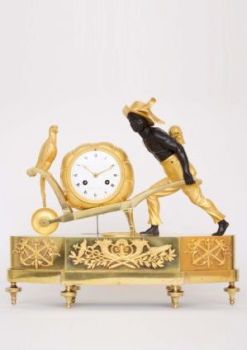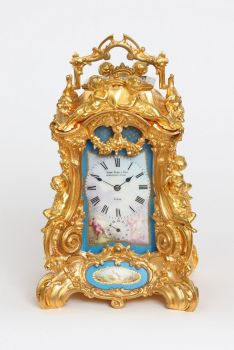A French Empire ormolu urn mantel clock with griffins, circa 1800 1800
Unknown artist
29 ⨯ 25 ⨯ 15 cm
Currently unavailable via Gallerease
- About the artwork8-day movement with half hour striking, very finely cast and chiseled gilt bronze and patinated case.
8.5-cm enamel dial with Roman numerals and fine gilt hands, 8-day spring-driven movement with anchor escapement and silk suspended pendulum, half hour countwheel striking on a bell, fitted in a finely cast and chiseled ormolu case, surmounted by an oval urn supported by two griffins, on an oval stepped base raised on bun feet
Before Napoleon had conquered Egypt, often the classical ancient art of the Greeks and Romans was an inspiration for mantel clocks. After conquering Egypt the subject matter for works of art was enriched with ornament of ancient Egypt. For us the harmony and symmetry of the design in combination with the fine workmanship are probably enough reason to like this clock. But for the elite of the early 19thC who owned clocks like this subject matter was very important. And the figures, symbols or ornament had a deeper layer of meaning only understood by the higher echelon of society. The iconographical meaning of a griffin is vigilance and courage because of the combination of lion and eagle. But in Christianity it also symbolizes the supremacy over heaven (eagle) and earth (lion) like Christ. When looking at it this way, a classical and profane subject suddenly becomes very acceptable in a Christian society. - About the artist
It might happen that an artist or maker is unknown.
Some works are not to be determined by whom it is made or it is made by (a group of) craftsmen. Examples are statues from the Ancient Time, furniture, mirroirs, or signatures that are not clear or readible but as well some works are not signed at all.
As well you can find the following description:
•“Attributed to ….” In their opinion probably a work by the artist, at least in part
•“Studio of ….” or “Workshop of” In their opinion a work executed in the studio or workshop of the artist, possibly under his supervision
•“Circle of ….” In their opinion a work of the period of the artist showing his influence, closely associated with the artist but not necessarily his pupil
•“Style of ….” or “Follower of ….” In their opinion a work executed in the artist’s style but not necessarily by a pupil; may be contemporary or nearly contemporary
•“Manner of ….” In their opinion a work in the style of the artist but of a later date
•“After ….” In their opinion a copy (of any date) of a work of the artist
•“Signed…”, “Dated….” or “Inscribed” In their opinion the work has been signed/dated/inscribed by the artist. The addition of a question mark indicates an element of doubt
•"With signature ….”, “With date ….”, “With inscription….” or “Bears signature/date/inscription” in their opinion the signature/ date/ inscription has been added by someone other than the artist
Artwork details
Related artworks
- 1 - 4 / 12
- 1 - 4 / 24

